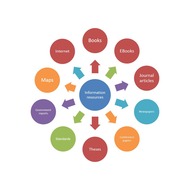
(View Complete Item Description)
This How To Do Research Unit Guide provides a lesson-to-lesson foundation for teaching:● What primary sources are● Real vs. fake information (evaluating sources)● Document analysis● Different ways to obtain information● How to formulate research questions● How to find answers to research questions● The hows and whys of citations (annotated bibliography)By the time students get to high school, they should have a basic understanding of how to effectively do research. Considering that there are so many steps involved in the research process, the earlier these necessary skills are taught, the more time students will be able to devote to theiractual projects. Moreover, in today’s world, information literacy needs to be achieved at an earlier age, so students can learn to be smart consumers, responsible sharers, and presenters of information. Throughout the research process, students will learn that there will be dead ends, questions that are too broad or too narrow, questions that do not have answers. This is an accurate reflection of what their experiences will continue to be as they move into higher level research projects in their educational careers.
Material Type:
Activity/Lab,
Full Course,
Homework/Assignment,
Primary Source,
Teaching/Learning Strategy,
Unit of Study
Author:
The Rockefeller Archive Center




















